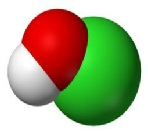
Copyright © Mauve Technology Limited 2013
malvaSAFE technology compares favourably with a number of existing alternative disinfecting chemical systems.
Puricore’s Sterilox endoscopy cleaning system – is another Hypochlorous Acid [HOCl] technology that has similar safety & biocidal benefits to malvaSAFE but it’s downside is that the sterilox disinfectant is generated on site using very expensive machinery [via electrolysis] that has a limited delivery capability. Furthermore the Sterilox formula causes both damage & corrosion to sensitive endoscope surfaces after prolonged use [>100 cycles] caused primarily by the residue salt, NaCl, it contains.
Peracetic Acid [PAA] based systems such as Gigasept, Terralin, NuCidex, Proxitane
& Aperlane are used extensively for endoscopy sterilization, clean-
Virkon is a widely-
Quaternary ammonium compounds, or ‘quats’ such as Hexaquart, have been shown to have
broad antimicrobial activity & are often used in the food service industry & in swimming
pools as a sanitizing agent. Although they have low toxicity & are non-
Triclosan [based on polychlorophenoxyphenols ] is another anti-
Presept & Biospot [based upon sodium dichloroisocyanurates, or NaDCC’s] are also used as a disinfectant, a biocide and for water purification. It works by releasing chlorine in low concentrations at a constant rate. It can only be supplied as a powder or tablet, is not stable in liquid form, requires much longer contact time & is corrosive to most metals. Furthermore, if mixed with hot water, any chlorine release, potentially hazardous, is amplified.
malvaSAFE - why switch?

| malvaSAFE |
| malvaSEE |
| malvaSAFE technology |
| malvaSAFE performance |
| malvaSAFE why switch? |
| malvaSAFE products |
| malvaSAFE commercial opportunities |